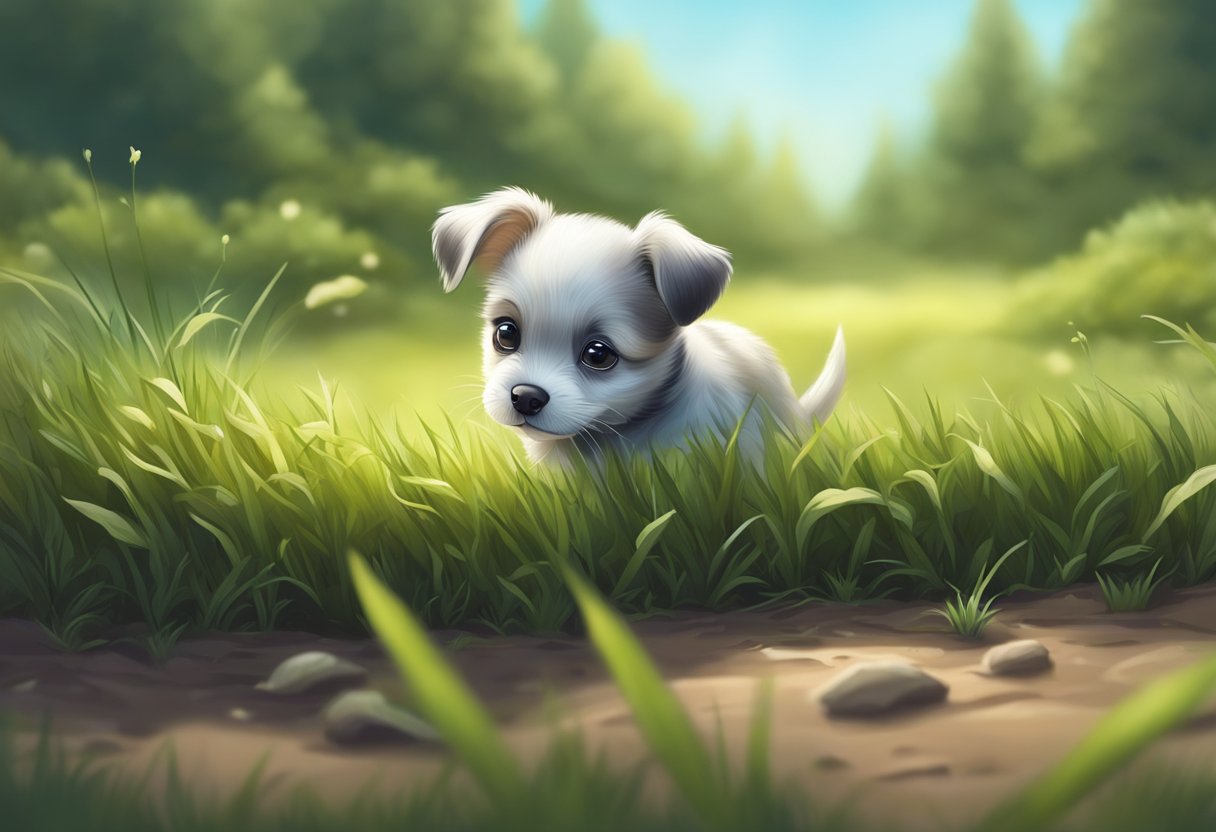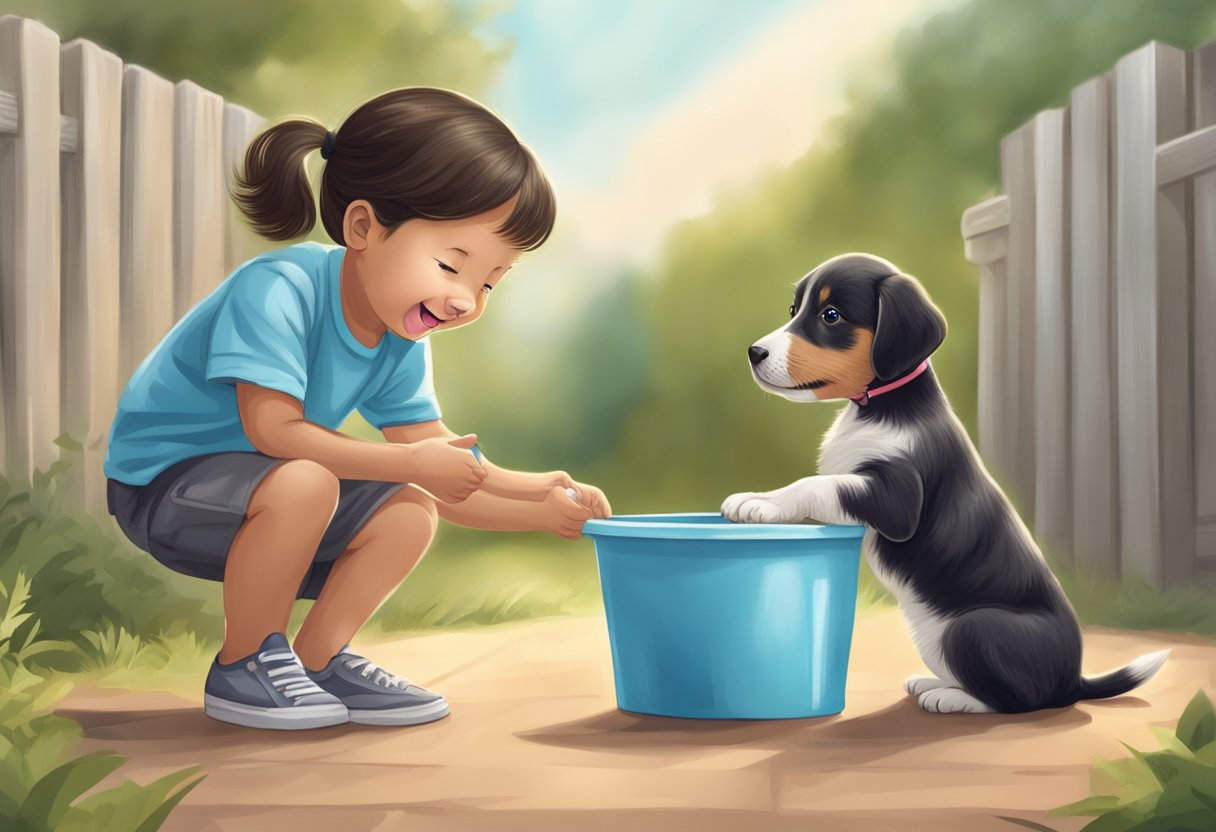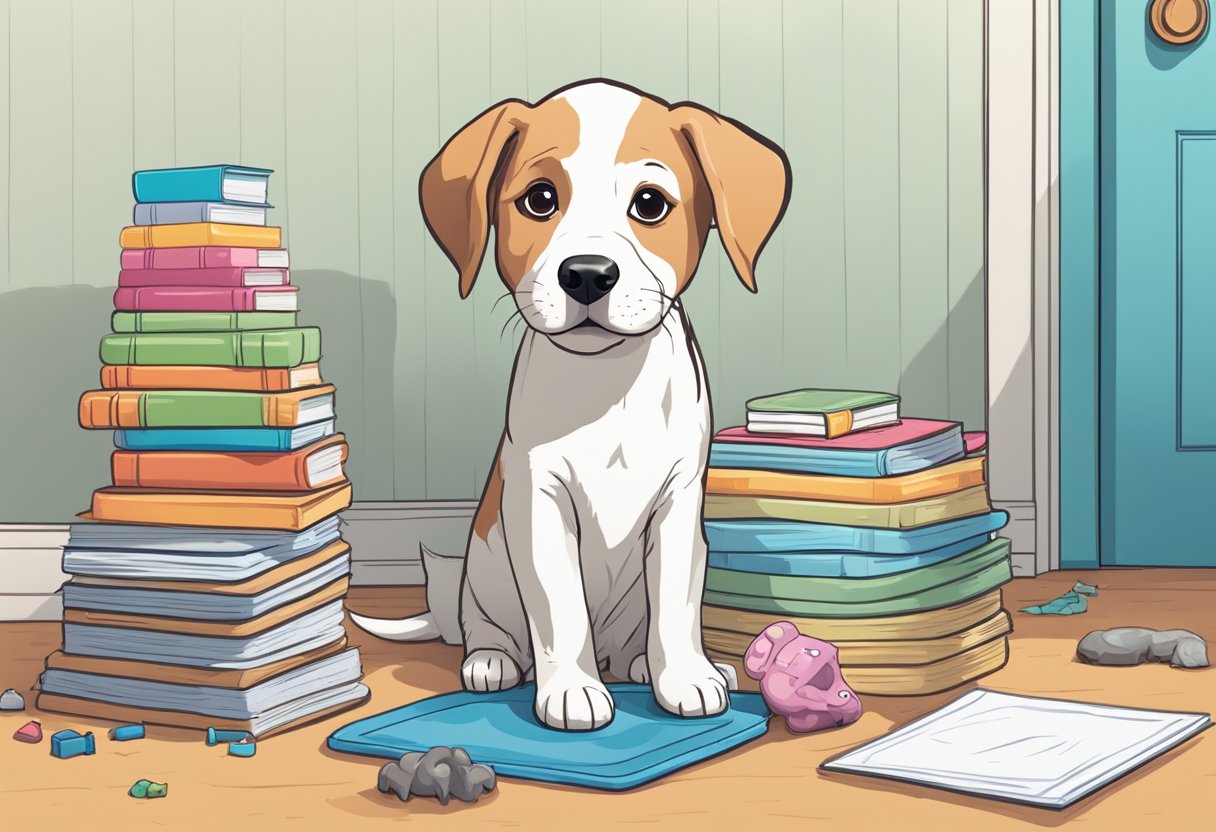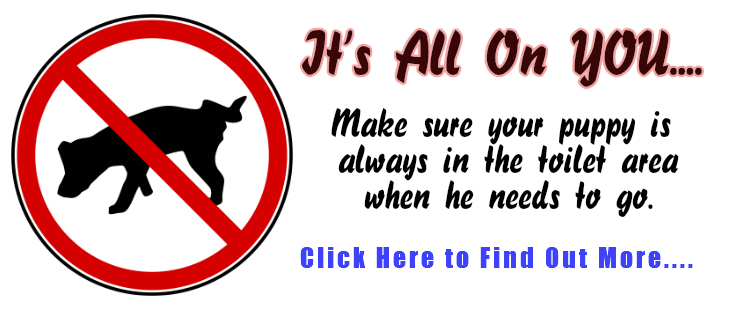How To Potty Train A Stubborn Puppy
How to Potty Train a Stubborn Puppy: Tips and Tricks

Potty training a new puppy can be a challenging task, especially if the puppy is stubborn. However, with patience, consistency, and positive reinforcement, it is possible to potty train even the most headstrong puppies. In this article, we will provide tips and techniques to help you potty train your stubborn puppy successfully.
One of the most important things to keep in mind when potty training a stubborn puppy is to establish a routine. Puppies thrive on routine and consistency, so it is essential to take them outside to potty at regular intervals. It is recommended to take puppies outside to potty first thing in the morning, after meals, after playtime, and before bedtime.
By establishing a routine, your puppy will learn when it is time to go potty and will be less likely to have accidents inside.
Understanding Puppy Behavior

Potty training a puppy can be a challenging task, especially when dealing with stubborn puppies. Understanding puppy behavior is crucial in developing an effective potty training plan. Here are some important concepts to keep in mind:
Common Challenges in Potty Training
Puppies have a short attention span and may not understand the concept of potty training initially. They may also find it difficult to hold their bladder for long periods, leading to accidents. Additionally, puppies may not associate going outside with potty time, making it difficult to establish a routine.
Recognizing Stubbornness vs. Confusion
It is important to differentiate between stubbornness and confusion when dealing with a puppy’s potty training. Stubbornness is a deliberate disobedience, while confusion is a lack of understanding. Puppies may be confused about where to go potty or when to go outside, leading to accidents. It is important to be patient and consistent in training a puppy to avoid confusing them further.
To avoid confusion, it is important to establish a routine for taking the puppy outside. This includes taking them out after meals, naps, and playtime. Puppies may also give cues such as sniffing around, circling, or whining when they need to go outside. Recognizing these cues and taking them outside promptly can help establish a routine and avoid accidents.
In summary, understanding a puppy’s behavior is key in developing an effective potty training plan. Consistency, patience, and positive reinforcement are essential in training a stubborn puppy.
Preparation for Potty Training
Potty training a stubborn puppy requires patience, consistency, and preparation. Before starting the training process, the owner should ensure that they have everything they need to make the process as smooth as possible. This section outlines the necessary preparations for potty training a stubborn puppy.
Choosing the Right Time
The first step in preparing for potty training is choosing the right time. Potty training should begin when the puppy is between 12 and 16 weeks old. At this age, the puppy has better bladder control and can hold their urine for longer periods. It is also important to choose a time when the owner can dedicate enough time and attention to the training process. The owner should be prepared to take the puppy outside frequently, especially during the initial stages of training.
Gathering Necessary Supplies
To potty train a stubborn puppy, the owner should have the necessary supplies. These include:
- Crate: A crate is essential for potty training a puppy. It provides a safe and comfortable space for the puppy to rest and sleep. The crate should be large enough for the puppy to stand up, turn around, and lie down comfortably.
- Leash and collar: A leash and collar are necessary for taking the puppy outside for potty breaks. The collar should fit snugly but not be too tight.
- Potty pads or newspaper: Potty pads or newspaper can be used to create a designated potty area inside the house. These should be placed in an easily accessible area and changed frequently.
- Treats: Treats are essential for positive reinforcement during the training process. The owner should choose small, soft treats that the puppy can easily chew and swallow.
- Cleaning supplies: Accidents are bound to happen during potty training. The owner should have cleaning supplies on hand to clean up any messes promptly.
By choosing the right time and gathering the necessary supplies, the owner can set themselves and their puppy up for success in the potty training process.
Establishing a Routine
Potty training a stubborn puppy can be a challenging task, but it can be made easier by establishing a routine. A routine helps the puppy understand when it is time to go outside and what is expected of them. This section will cover some important aspects of establishing a routine for potty training.
Setting a Schedule
Setting a schedule is crucial when it comes to potty training a puppy. Puppies have small bladders and need to go outside frequently. According to the American Kennel Club, puppies under six months old should be taken outside every two hours, as well as after eating, drinking, playing, and sleeping. As the puppy gets older, they can hold it for longer periods of time.
It is important to take the puppy outside at the same times every day. This helps them learn when it is time to go outside and reduces the likelihood of accidents inside the house. A schedule can be created and followed consistently to make it easier for the puppy to learn.
Consistency and Patience
Consistency is key when it comes to potty training a puppy. The puppy should be taken outside to the same spot every time they need to go. This helps them understand that this is the designated spot for potty breaks. The puppy should also be praised every time they go outside. This reinforces the behavior and encourages them to continue going outside.
Patience is also important when potty training a puppy. Accidents will happen, and it is important not to punish the puppy for them. Punishing the puppy can cause them to become fearful and may make potty training even more difficult. Instead, accidents should be cleaned up quickly and calmly.
In conclusion, establishing a routine is an important part of potty training a stubborn puppy. Setting a schedule and being consistent and patient can make the process easier for both the puppy and the owner.
Positive Reinforcement Techniques

House training a stubborn puppy can be a challenging task, but it can be made easier with the use of positive reinforcement techniques. Positive reinforcement is a proven method of training that involves rewarding good behavior and ignoring bad behavior. This section will discuss two positive reinforcement techniques that can be used to potty train a stubborn puppy: reward-based training and dealing with accidents positively.
Reward-Based Training
Reward-based training is a popular method of training that involves rewarding a puppy for good behavior. This can be done using treats, toys, or verbal praise. When potty training a puppy, it is important to reward them every time they go potty in the right place. This will encourage them to repeat the behavior in the future.
To use reward-based training, the owner should take the puppy outside to the designated potty area frequently throughout the day. Once the puppy goes potty in the right place, the owner should immediately reward them with a treat or praise. This will help the puppy associate going potty in the right place with positive feelings.
Dealing with Accidents Positively
Dealing with accidents positively is an important part of potty training a stubborn puppy. Punishing a puppy for having an accident can be counterproductive and may cause the puppy to become anxious or afraid. Instead, the owner should remain calm and clean up the mess without making a fuss.
To deal with accidents positively, the owner should take the puppy outside to the designated potty area immediately after the accident. If the puppy goes potty in the right place, they should be rewarded as usual. If the puppy does not go potty, the owner should take them back inside and try again in a few minutes.
In summary, positive reinforcement techniques such as reward-based training and dealing with accidents positively can be effective methods of potty training a stubborn puppy. With patience and consistency, owners can successfully train their puppies to go potty in the right place.
Troubleshooting and Advanced Tips
Addressing Persistent Issues
Potty training a stubborn puppy can be a challenging task. Even when following the best practices, some puppies may still have persistent issues. Here are some common problems and how to address them:
- Accidents inside the house: If the puppy is still having accidents inside the house, it may be necessary to go back to basics and start the training process again. This may involve taking the puppy outside more frequently, supervising them more closely, and providing more positive reinforcement when they do go potty outside.
- Refusing to go outside: Some puppies may refuse to go outside, especially if they are uncomfortable with the environment or the weather. In this case, it may be helpful to gradually introduce them to the outdoors by taking them on short walks around the yard or neighborhood. Additionally, providing treats or toys outside can help make the experience more enjoyable for the puppy.
- Separation anxiety: Puppies with separation anxiety may have a harder time with potty training, as they may associate going potty with being left alone. In this case, it may be helpful to gradually increase the amount of time the puppy is left alone, starting with just a few minutes and gradually working up to longer periods of time.
When to Seek Professional Help
While most puppies can be successfully potty trained with patience and consistency, some may require professional help. Here are some signs that it may be time to seek the assistance of a professional dog trainer:
- Aggression: If the puppy becomes aggressive during the potty training process, it may be necessary to seek professional help to address any underlying behavioral issues.
- Medical issues: If the puppy is still having accidents despite following the potty training process, it may be necessary to consult with a veterinarian to rule out any underlying medical issues.
- Lack of progress: If the puppy is not making progress despite consistent training, it may be helpful to seek the assistance of a professional dog trainer who can provide additional guidance and support.
